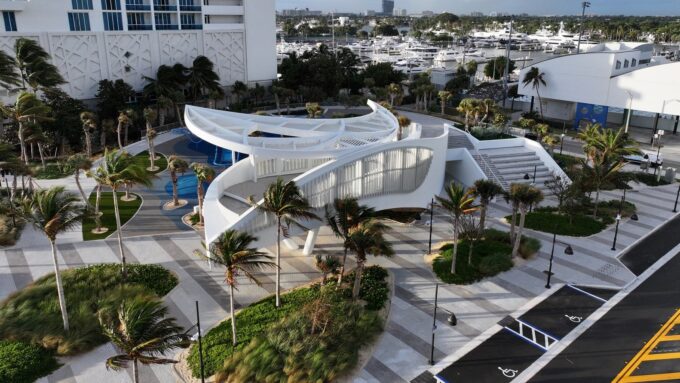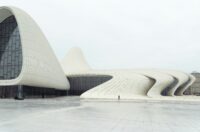- Home
- Articles
- Architectural Portfolio
- Architectral Presentation
- Inspirational Stories
- Architecture News
- Visualization
- BIM Industry
- Facade Design
- Parametric Design
- Career
- Landscape Architecture
- Construction
- Artificial Intelligence
- Sketching
- Design Softwares
- Diagrams
- Writing
- Architectural Tips
- Sustainability
- Courses
- Concept
- Technology
- History & Heritage
- Future of Architecture
- Guides & How-To
- Art & Culture
- Projects
- Interior Design
- Competitions
- Jobs
- Store
- Tools
- More
- Home
- Articles
- Architectural Portfolio
- Architectral Presentation
- Inspirational Stories
- Architecture News
- Visualization
- BIM Industry
- Facade Design
- Parametric Design
- Career
- Landscape Architecture
- Construction
- Artificial Intelligence
- Sketching
- Design Softwares
- Diagrams
- Writing
- Architectural Tips
- Sustainability
- Courses
- Concept
- Technology
- History & Heritage
- Future of Architecture
- Guides & How-To
- Art & Culture
- Projects
- Interior Design
- Competitions
- Jobs
- Store
- Tools
- More
Empire State Building: Icon of American Architecture and Art Deco Brilliance
Discover the Empire State Building's legacy as an American architectural icon. From its breathtaking Art Deco design and towering height to its cultural impact and modern sustainability efforts, this landmark symbolizes resilience, innovation, and progress. Explore its historic significance, green renovations, and enduring role as a beacon of New York City and American ambition.

Few structures capture the spirit of American ambition and innovation quite like the Empire State Building. Rising 1,454 feet above the bustling streets of New York City, it’s more than just a skyscraper—it’s a symbol of resilience, progress, and architectural brilliance. Since its completion in 1931, this Art Deco masterpiece has stood as a testament to what’s possible when vision meets determination.
As one of the most recognized landmarks in the world, the Empire State Building represents a pivotal moment in architectural history. It’s not just a marvel of design but also a cultural icon that’s inspired countless films, photographs, and stories. Whether we’re admiring its towering presence or exploring its rich legacy, the Empire State Building reminds us of the bold dreams that define American architecture.

Table of Contents
ToggleArchitectural Characteristics and Art Deco Inspiration
The Empire State Building’s architecture embodies Art Deco design, characterized by geometric forms, ornate detailing, and streamlined aesthetics. Its tiered construction emphasizes verticality, creating a striking silhouette against the New York skyline. The limestone and granite façade, accented with aluminum and stainless-steel detailing, reflects the sophistication of 1930s design principles.
Towering setbacks define the building’s stepped form, a hallmark of Art Deco style. These setbacks were not only visually appealing but also complied with zoning laws of the time, ensuring maximum sunlight for the streets below. The building’s spire, originally designed as a dirigible mooring mast, adds both functional intent and symbolic grandeur to its architectural profile.
Inside, the lobby features Art Deco motifs, including terrazzo flooring, bronze accents, and an iconic celestial ceiling mural. These elements create a cohesive aesthetic that celebrates elegance and modernity. Triangular patterns, sunbursts, and metallic finishes highlight the widespread influence of Art Deco design.
The Empire State Building demonstrates how architecture merges form with function, blending engineering innovation with artistic expression. It remains a testament to the enduring legacy of Art Deco inspiration in American architecture.

The Changing Role of the Empire State Building
The Empire State Building has transitioned from being a symbol of technological achievement to a hub of modern functionality and sustainability. Once the world’s tallest building, it primarily represented innovation and urban progress during the early 20th century. Today, it serves as a versatile space that combines historical significance with contemporary utility.
Its role as a commercial powerhouse has grown, housing over 1,000 businesses and employing approximately 15,000 people. This makes it a dynamic contributor to New York City’s economy. The building’s observation decks, visited by over 4 million people annually, maintain its global stature as a premier tourist destination.
Recent sustainability efforts highlight its adaptability. A $550 million renovation completed in 2020 introduced measures like energy-efficient windows, upgraded heating and cooling systems, and LED lighting. These advancements reduced its energy consumption by 40%, setting a benchmark for environmentally conscious architecture.
Cultural relevance remains intact as the building continues to appear in films, TV shows, and advertisements. Its iconic silhouette and lighting displays reinforce its role as a beacon of American identity. Through purposeful evolution, the Empire State Building reflects the changing needs of society while preserving its historical legacy.
Influence on the Skyline of New York City
The Empire State Building redefined New York City’s skyline with its towering height and distinctive silhouette. Rising 1,454 feet, it surpassed existing skyscrapers upon its completion in 1931, becoming the tallest building in the world at the time. Its prominent Art Deco design added sophistication and modernity to the urban landscape, establishing a visual benchmark for future skyscrapers.
The building’s impact extends beyond its physical presence, as it shifted perceptions of verticality in architecture. Its streamlined setbacks and illuminated spire created a unique aesthetic that reflected the ambition and innovation of the early 20th century. This iconic design elevated New York City’s global reputation as the epicenter of architectural progress.
Its position in Midtown Manhattan ensures visibility from numerous vantage points, making it a focal point in the city’s panoramic views. The Empire State Building not only became a symbol of the city but also contributed to defining its architectural identity. From serving as a backdrop in postcards to dominating countless photographs, it continues to represent New York City’s essence and dynamism.,

Cultural Significance and Heritage
The Empire State Building stands as a powerful symbol of American cultural identity. Its role extends beyond architecture, permeating various aspects of popular culture, history, and collective memory. Recognized globally, it embodies the spirit of progress, ambition, and resilience that defines America.
Hollywood cemented the building’s iconic status, featuring it in classics like King Kong (1933) and Sleepless in Seattle (1993). These cinematic appearances have made it synonymous with romance, adventure, and human achievement. Its illuminated spire, which changes colors to mark holidays and events, fosters a shared sense of celebration and unity, extending its influence to cultural traditions.
Designated a National Historic Landmark in 1986, the Empire State Building carries historical and architectural significance. It represents the ingenuity and determination of the Great Depression era, standing as a testament to the innovative spirit that shaped modern America. Preservation efforts ensure its architectural details, including Art Deco artistry, remain intact as a heritage treasure for future generations.
We also see its relevance in inspiring artists, writers, and photographers globally. As an enduring muse, it continues to spark creativity and highlight its role in shaping cultural narratives. This dual significance, as an artistic and historical emblem, reinforces its standing as an indelible part of both American heritage and global architectural identity.

Sustainable Revitalization of the Empire State Building
The Empire State Building has become a model for sustainable skyscraper retrofits. A $550 million renovation, completed in 2020, introduced cutting-edge energy-efficient measures that reduced energy consumption by 40%. These enhancements include the installation of 6,514 triple-glazed windows, which optimize insulation and reduce heat gain. A state-of-the-art chiller plant retrofit improved HVAC efficiency, minimizing operational energy use.
The renovation also incorporated advanced LED lighting systems and upgraded building management technology to monitor and optimize energy performance. As part of the effort, over 15,000 square feet of reflective insulation were added behind radiators to retain heat, cutting heating demands. These changes earned the Empire State Building global recognition, securing prestigious certifications like LEED Gold for Existing Buildings.
By prioritizing sustainability, the Empire State Building underscores the potential for retrofitting historic landmarks to meet modern environmental standards. It remains not just a symbol of architectural excellence but also a leader in promoting eco-conscious innovation in urban environments.
The Empire State Building in Today
The Empire State Building remains an integral part of New York City, blending historical significance with modern functionality. As one of the world’s most recognizable landmarks, it attracts millions annually to its observation decks, which offer panoramic views of the city and beyond. With its central location in Midtown Manhattan, it continues to influence tourism, commerce, and culture.
Sustainability plays a pivotal role in the building’s operations. A $550 million upgrade in 2020 transformed it into a leader in energy-efficient architecture. These improvements included triple-glazed windows, advanced LED lighting, and a cutting-edge chiller plant retrofit. These innovations brought a 40% reduction in energy consumption and earned certifications like LEED Gold, reinforcing its status as a model for eco-conscious urban development.
Its role as an economic hub persists, housing over 1,000 tenants across multiple industries. The building supports about 15,000 workers daily, underscoring its economic impact. High-profile companies occupy its modernized office spaces, leveraging its infrastructure and iconic address.
Cultural relevance remains untouched as the Empire State Building continues to inspire creative industries. Its appearances in movies, TV shows, and global advertisements keep it at the forefront of popular imagination. The illuminated spire, which changes colors to honor holidays and cultural events, contributes to its identity as a symbol of unity and celebration.
- 20th-century architecture
- architectural landmarks in NYC
- Art Deco architecture
- Art Deco skyscrapers
- Empire State Building
- Empire State Building design
- Empire State Building events
- Empire State Building facts
- Empire State Building height
- Empire State Building history
- Empire State Building hours
- Empire State Building light show
- Empire State Building observation deck
- Empire State Building tickets
- Empire State Building tours
- Empire State Building visitor tips
- famous New York buildings
- historic NYC landmark
- iconic American architecture
- Manhattan skyline
- Midtown Manhattan landmarks
- New York City attractions
- New York skyscraper
- NYC architectural marvels
- world-famous architecture
Submit your architectural projects
Follow these steps for submission your project. Submission FormLatest Posts
3D Printed Homes: Time, Cost, and What to Expect
3D printed homes explained: realistic timelines (24–72h walls, 8–16 weeks total), true...
How a Contact Centre Boosts Trust in Your Building Business
In construction, trust is the glue that holds projects together. Clients need...
How Real Time Parcel Geolocation Is Redefining Last Mile Efficiency for Modern Businesses
Last mile delivery has become the most critical point in the customer...
How Can Small Spaces Stay Stylish and Relaxing?
In today’s fast-paced urban lifestyle, small living spaces are becoming increasingly common....












Leave a comment